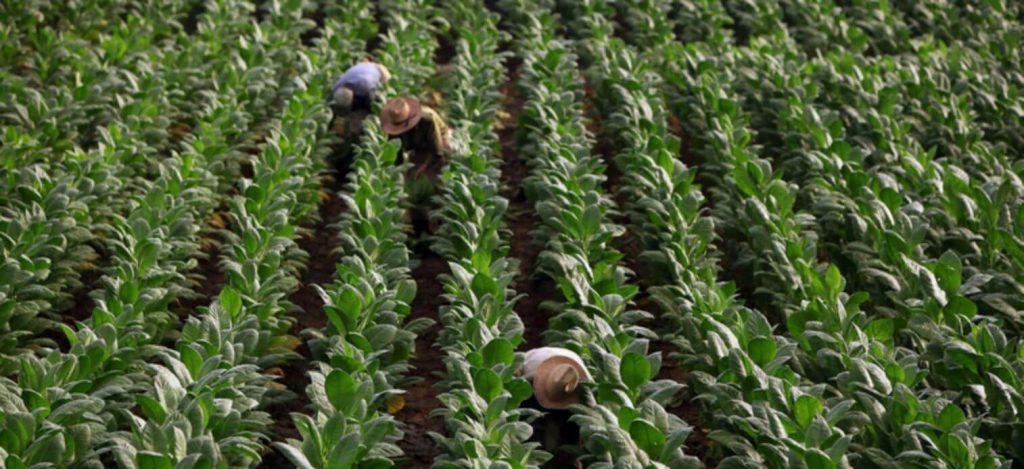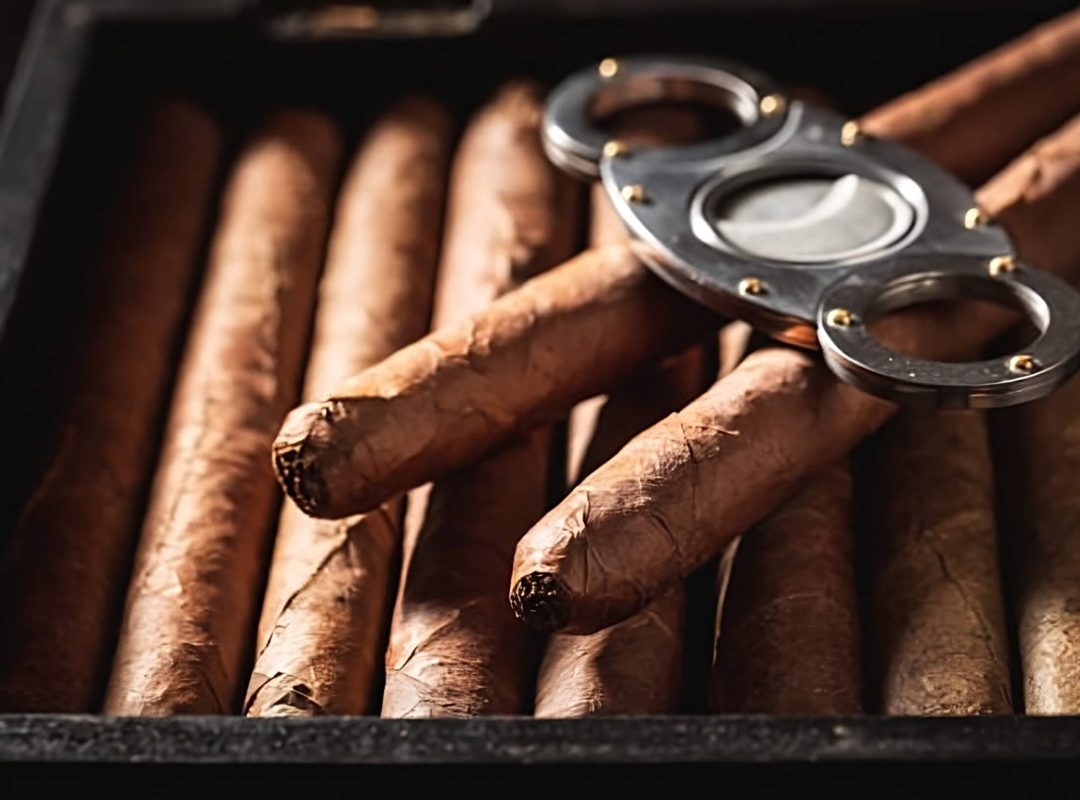
Unlock the intriguing history and allure of Virginia tobacco plantations, where tradition and flavor intertwine. Explore the captivating stories, discover the legacy, and indulge in the remarkable flavors that have made Virginia tobacco plantations legendary.
Tobacco has played a significant role in shaping the history and culture of Virginia. With its fertile soil and favorable climate, the state has been home to thriving tobacco plantations for centuries. In this article, we will delve into the fascinating world of Virginia tobacco plantations, exploring their varieties, cultivation methods, historical significance, modern industry, artisanal products, cultural impact, and future outlook.
1.1 Background of Virginia Tobacco Plantations
Virginia tobacco plantations have a rich and storied past, dating back to the early days of European colonization in America. The cultivation of tobacco quickly became a vital part of Virginia’s economy and played a crucial role in its development.
1.2 Significance and History
Tobacco plantations in Virginia have not only contributed to the economic prosperity of the state but have also shaped its cultural and historical landscape. The tobacco trade had far-reaching effects, both locally and globally, and left an indelible mark on Virginia’s identity.
2. Virginia Tobacco Varieties
Virginia is known for producing several distinct tobacco varieties, each with its unique characteristics and uses.
2.1 Burley Tobacco
Burley tobacco, known for its high nicotine content and mild flavor, is one of the prominent tobacco types grown in Virginia. It is often used in cigarette blends and prized for its smoothness.
2.2 Flue-cured Tobacco
Flue-cured tobacco, also referred to as “bright leaf” tobacco, is another significant variety cultivated in Virginia. Its golden color and sweet aroma make it desirable for cigarette manufacturing and pipe tobacco blends.
2.3 Dark-fired Tobacco
Dark-fired tobacco, with its rich and smoky flavor, is a niche variety that finds its place in the production of chewing tobacco and snuff. The tobacco leaves are subjected to smoke-curing, giving them a distinct taste and aroma.
3. Cultivation and Harvesting
Successful cultivation of Virginia tobacco requires careful attention to soil conditions, climate, and precise harvesting techniques.
3.1 Soil and Climate Requirements
Virginia tobacco thrives in well-drained, sandy loam soils with good fertility. The region’s temperate climate with warm summers and mild winters provides ideal conditions for its growth.
3.2 Planting and Care
The planting season for Virginia tobacco typically begins in the spring. Farmers prepare the fields, sow the seeds in seedbeds, and transplant the young seedlings to the main field. Regular care, including weed control and pest management, is essential for healthy plant growth.
3.3 Harvesting and Curing
Tobacco leaves are harvested when they reach maturity, typically by hand or using mechanical harvesters. After harvesting, the leaves undergo a curing process, where they are dried, fermented, and aged to develop their desired flavors and qualities.
4. Historical Significance
Virginia tobacco played a pivotal role in shaping the history of the region and the United States as a whole.
4.1 Colonial Era Tobacco Production
During the colonial era, tobacco cultivation became the backbone of Virginia’s economy. Plantations flourished, and tobacco became a highly sought-after commodity, driving the colony’s growth and prosperity.
4.2 Influence on the American Economy
Virginia’s tobacco industry had a significant impact on the American economy. It contributed to the growth of trade and played a role in the establishment of early American industries, including shipping and manufacturing.
4.3 Role in the Tobacco Trade
Virginia’s tobacco played a crucial role in the global tobacco trade. The crop was exported to Europe and other colonies, establishing Virginia as a leading tobacco producer and exporter.
5. Modern Virginia Tobacco Industry
The tobacco industry in Virginia has evolved over time, adapting to changing market demands and technological advancements.
5.1 Major Tobacco-Growing Regions
Today, Virginia’s tobacco is primarily grown in the southern and central regions of the state. Counties like Pittsylvania, Halifax, and Amelia are known for their significant tobacco production.
5.2 Technological Advancements
Advancements in agricultural technology have revolutionized the tobacco cultivation process. Modern farming equipment, irrigation systems, and improved curing methods have increased efficiency and yield.
5.3 Market Trends and Challenges
The tobacco industry faces various challenges, including fluctuating demand, regulatory restrictions, and changing consumer preferences. Market trends continue to shape the production and marketing strategies of Virginia tobacco growers.
6. Artisanal Tobacco Products
Virginia tobacco is not only used for large-scale production but also finds its way into artisanal and specialized tobacco products.
6.1 Hand-Rolling Cigars
Crafting premium cigars using Virginia tobacco requires expert knowledge and skill. Artisanal cigar makers hand-roll each cigar, selecting the finest tobacco leaves to create a unique and flavorful smoking experience.
6.2 Pipe Tobacco Blends
Virginia tobacco is a key component in many pipe tobacco blends. Blenders carefully combine different varieties to create diverse flavor profiles that cater to the preferences of pipe enthusiasts.
6.3 Specialty Tobacco Products
Beyond cigarettes and cigars, Virginia tobacco is used in the production of specialty tobacco products like chewing tobacco, snuff, and smokeless tobacco alternatives.
7. Cultural and Social Impact
Virginia’s tobacco industry has had a profound influence on the state’s culture and society.
7.1 Tobacco in Virginia’s Culture and Heritage
Tobacco has been intertwined with Virginia’s cultural identity for centuries. Its legacy can be seen in traditions, festivals, and even the state’s nickname, the “Old Dominion.”
7.2 The Tobacco Industry’s Influence
The tobacco industry has played a role in shaping the economy and communities of Virginia. It has provided employment opportunities, supported local businesses, and contributed to philanthropic endeavors.
7.3 Changing Perceptions and Regulations
Changing societal attitudes towards smoking and the implementation of regulations have impacted the tobacco industry. Health concerns, anti-smoking campaigns, and smoking restrictions have influenced consumption patterns and marketing practices.
8. Future Outlook
The future of Virginia tobacco plantations faces both challenges and opportunities.
8.1 Sustainability and Environmental Concerns
Sustainable farming practices and environmental stewardship are gaining importance in the tobacco industry. Balancing production with environmental considerations will be vital for the long-term viability of Virginia’s tobacco plantations.
8.2 Shifting Consumer Preferences
As consumer preferences evolve, the tobacco industry must adapt. This includes exploring alternative products, reducing harmful additives, and responding to changing trends in smoking habits.
8.3 Potential Innovations and Adaptations
Innovation in tobacco cultivation, processing, and product development can drive the industry forward. Research and development efforts may lead to the creation of new tobacco varieties, improved curing methods, and novel smoking experiences.
9. Conclusion
Virginia tobacco plantations have a rich history, a diverse range of varieties, and a significant cultural and economic impact. The industry has evolved over time, facing challenges and embracing change. As the future unfolds, Virginia’s tobacco growers and stakeholders will continue to navigate market dynamics, environmental concerns, and changing consumer preferences, ensuring the legacy of Virginia tobacco remains alive while embracing the opportunities of a modern era.
FAQs:
- What are the key factors contributing to the success of Virginia tobacco plantations?
- The fertile soil, favorable climate, and historical expertise in tobacco cultivation contribute to the success of Virginia tobacco plantations.
- How is Virginia tobacco different from other tobacco varieties?
- Virginia tobacco is known for its milder flavor, high sugar content, and desirable aroma, making it suitable for various tobacco products.
- Where are the major tobacco-growing regions in Virginia?
- The southern and central regions of Virginia, including counties like Pittsylvania, Halifax, and Amelia, are major tobacco-growing areas.
- Why is Virginia tobacco historically significant?
- Virginia tobacco played a crucial role in the economy and development of the state during the colonial era, establishing it as a leading tobacco producer.
- How is tobacco harvested and cured on Virginia plantations?
- Tobacco leaves are typically harvested by hand or using mechanical equipment, followed by a curing process that involves drying and fermenting the leaves.
- Is Virginia tobacco primarily used for cigarettes?
- Virginia tobacco is versatile and used in various tobacco products, including cigarettes, cigars, pipe tobacco, and specialty products like chewing tobacco and snuff.
- Can you provide insights into the cultural impact of Virginia tobacco plantations?
- Virginia’s tobacco industry has had a profound influence on the state’s culture and heritage, reflected in traditions, festivals, and historical significance.
- Does the tobacco industry in Virginia face any challenges?
- The tobacco industry in Virginia faces challenges such as changing consumer preferences, regulatory restrictions, and concerns over sustainability and environmental impact.
- What are the potential future innovations and adaptations in Virginia tobacco plantations?
- Future innovations may include advancements in cultivation techniques, product development, and sustainability practices to address evolving market trends and consumer demands.
- Who are some key figures or influential personalities in the history of Virginia tobacco plantations?
- Notable figures in the history of Virginia tobacco plantations include prominent plantation owners, tobacco traders, and industry pioneers.
- What role does technology play in modern Virginia tobacco plantations?
- Technology has revolutionized tobacco cultivation, introducing mechanization, precision farming methods, and advancements in curing and processing techniques.
- How do changing regulations and perceptions impact Virginia tobacco plantations?
- Changing regulations and societal perceptions regarding smoking influence tobacco consumption patterns, marketing practices, and the overall tobacco industry landscape.
- Will the future of Virginia tobacco plantations be influenced by sustainability practices?
- Sustainable farming practices and environmental considerations are gaining importance, shaping the future of Virginia tobacco plantations and ensuring long-term viability.
- Can you provide insights into the market trends and demand for Virginia tobacco?
- Market trends and demand for Virginia tobacco are influenced by factors such as consumer preferences, global tobacco trade dynamics, and evolving industry practices.
- Does Virginia tobacco have any specific certifications or quality standards?
- Virginia tobacco may adhere to certain certifications or quality standards to ensure consistent quality and meet industry requirements.
Books:
- “Tobacco Culture: The Mentality of the Great Tidewater Planters on the Eve of Revolution” by T.H. Breen
- “The Virginia Plantation: A Study of Slave Life and Labor” by James Curtis Ballagh
- “Tobacco and Slaves: The Development of Southern Cultures in the Chesapeake, 1680-1800” by Allan Kulikoff
- “Tobacco Coast: A Maritime History of Chesapeake Bay in the Colonial Era” by Arthur Pierce Middleton
- “The Tobacco Kingdom: Plantation, Market, and Consumption in the Southern Chesapeake, 1680-1820” by Daniel C. Littlefield
Sources of information:
- Virginia Department of Agriculture and Consumer Services (VDACS) – https://www.vdacs.virginia.gov/
- Virginia Tobacco Growers Association (VTGA) – https://www.vatobacco.org/
- Virginia Farm Bureau Federation – https://www.vafb.com/
- National Agricultural Statistics Service (NASS) – https://www.nass.usda.gov/
- United States Department of Agriculture (USDA) – https://www.usda.gov/
- Academic journals and publications in the field of agriculture and tobacco studies.
